For many people, fall is best time of year. The air gets crisp, and the barrier between the living and the dead begins to thin. For Dia de los Muertos we use feast and ritual to celebrate the lives of loved ones who have passed away, and on Halloween we use humor and ridicule to confront the forces that took them from us.
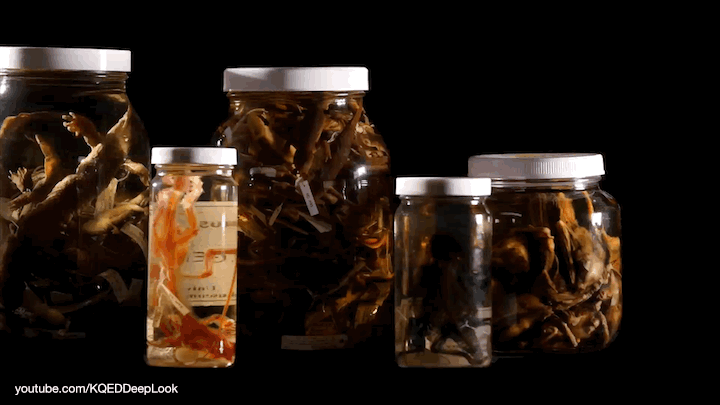
But there are special places in the world where people face death and decomposition every day to further our understanding of life. One is the Museum of Vertebrate Zoology at UC Berkeley, where museum scientists have mastered the art of preserving dead things. They call the vast second-floor collection a “library of life.” It contains more than 640,000 specimens of amphibians, reptiles, birds and mammals, which are meticulously catalogued to provide future generations of researchers a window back in time. Whom do we share this planet with? Whom are we losing? Whom have we already lost?
Scientists in the prep lab downstairs receive nearly a thousand carcasses a year. It’s their job to preserve each animal for long-term use in the collections upstairs. And the work is not for the squeamish.
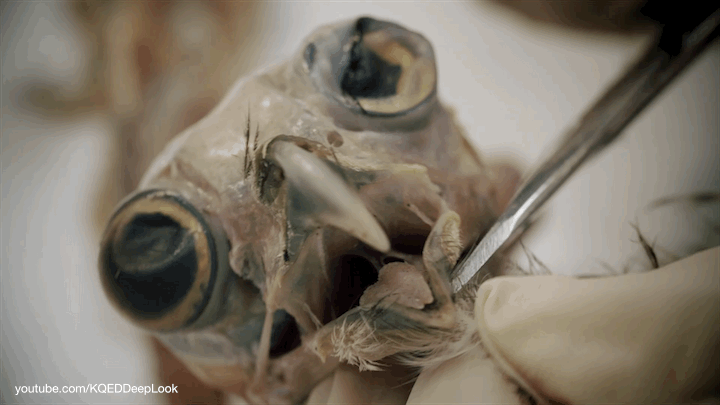
They observe each specimen closely, record measurements, collect visible parasites and then carefully remove skins to be stuffed. They cut open stomach cavities to remove organs, collect flesh samples, measure gonads and record stomach contents. The final challenge is to clean all the flesh from the bones without damaging them. And to do this, they rely on an unlikely ally: flesh-eating beetles.
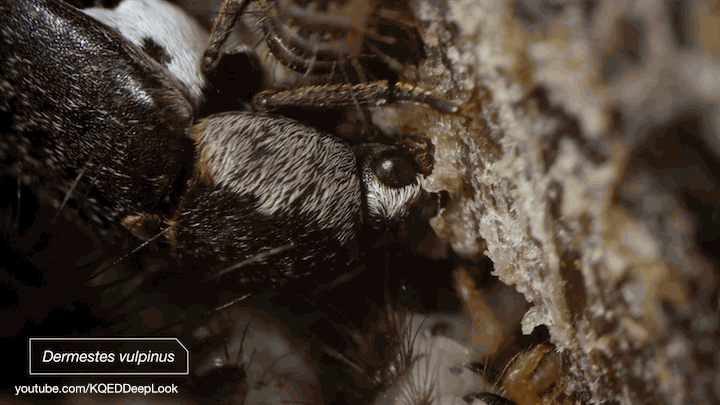
These dermestid beetles are direct descendants from the original colony established in this museum in 1924. The process now used at museums around the world was pioneered here.
In nature, these charming insects are death-homing devices. They’ll find a dead body about a week after death and lay eggs in the drying flesh. The larvae emerge with a voracious appetite, outgrowing their skins six to eight times in just days before pupating, becoming adults and flying away to start a new colony.
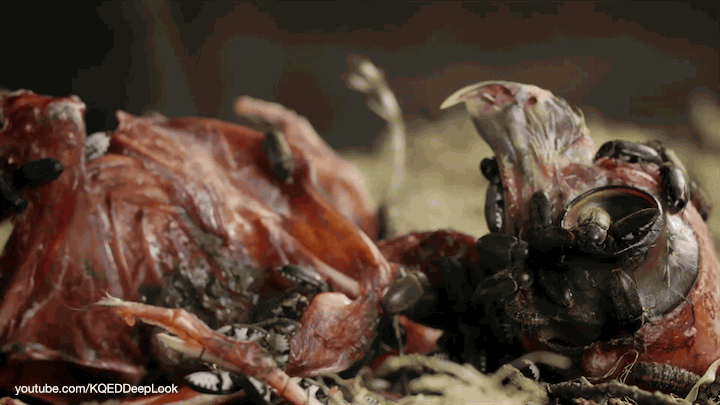
What makes beetles ideal for cleaning museum specimens is that they’re fast and fastidious eaters. They can pick a carcass clean while leaving even the most delicate bone structures intact. It takes a large beetle colony 24 – 48 hours to clean the bones of small animals like rabbits and owls, and they can work on 100 – 200 specimens at a time. Larger animals like deer or coyotes take about a week. But the alliance between beetles and museum is an uneasy one. Downstairs the beetles are a critical tool. But if Dermestids got loose upstairs, they could wreak havoc in the library stacks, munching through specimen drawers and ruining entire collections.
That’s what happened here. So museums try and keep a firewall between upstairs and downstairs. Between death and decomposition. And if you think about it, so do we. Consider the modern coffin designed to ward off decay. But decomposition is part of life too.
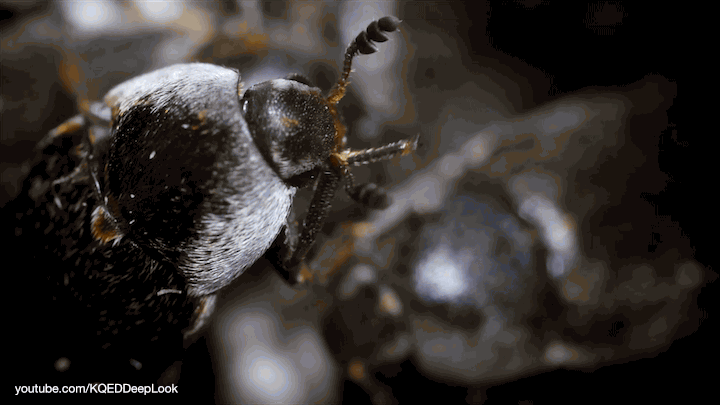
And in the end… the bugs will have their feast.